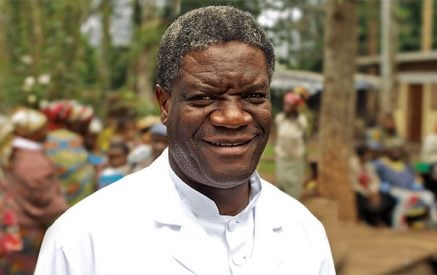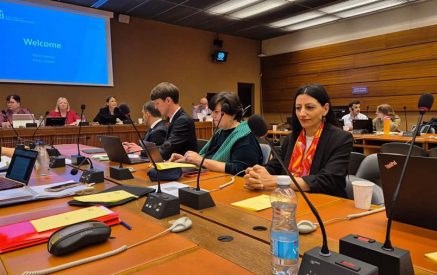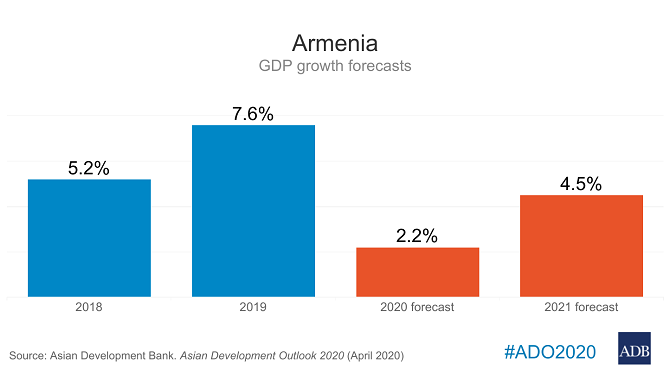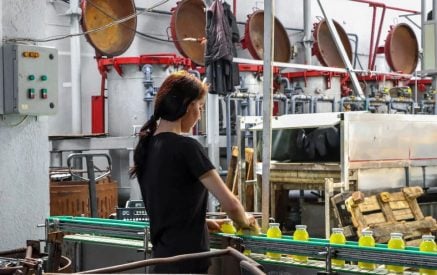MANILA, PHILIPPINES (3 April 2020) — Regional economic growth in developing Asia will decline sharply in 2020 due to the effects of the novel coronavirus (COVID-19) pandemic, before recovering in 2021, according to the Asian Development Outlook (ADO) 2020, the Asian Development Bank’s (ADB) annual flagship economic publication.
The report forecasts regional growth of 2.2% in 2020, a downward revision of 3.3 percentage points relative to the 5.5% ADB had forecast in September 2019. Growth is expected to rebound to 6.2% in 2021, assuming that the outbreak ends and activity normalizes. Excluding the newly industrialized economies of Hong Kong, China; the Republic of Korea; Singapore; and Taipei,China, developing Asia is forecast to grow 2.4% this year, compared to 5.7% in 2019, before rebounding to 6.7% next year.
“The evolution of the global pandemic—and thus the outlook for the global and regional economy—is highly uncertain. Growth could turn out lower, and the recovery slower, than we are currently forecasting. For this reason, strong and coordinated efforts are needed to contain the COVID-19 pandemic and minimize its economic impact, especially on the most vulnerable,” said ADB Chief Economist Yasuyuki Sawada.
In the People’s Republic of China (PRC), a sharp contraction in industry, services, retail sales, and investment in the first quarter due to the COVID-19 outbreak will pull growth down to 2.3% this year. Growth will rebound to an above normal 7.3% in 2021 before reverting back to normal growth. In India, measures to contain the spread of the virus and a weaker global environment this year will offset the benefits from recent tax cuts and financial sector reforms. Growth in India is forecast to slow to 4.0% in fiscal year (FY) 2020 before strengthening to 6.2% in FY2021.
Read also
In Armenia, reflecting the impact of COVID-19 on the economy, growth is projected to slow to 2.2% in 2020 with less rapid expansion in consumption, then edge up to 4.5% in 2021 as reforms initiated in 2019 and 2020 take hold and improve infrastructure, human capital, finance, and public administration․ Inflation and the current account deficit are expected to rise slightly in 2020 before moderating in 2021. Boosting public investment is essential for inclusive and sustainable growth․
Underpinning much of the weakness across Asia is a deteriorating external environment, with growth stagnating or contracting in the major industrial economies of the United States, Euro area, and Japan. Some commodity and oil exporters, such as those in Central Asia, will be hit by a collapse in commodity prices. Brent oil prices are expected to average $35 per barrel this year, down from $64 in 2019.
All of developing Asia’s subregions will see growth weaken this year because of weak global demand, and in some economies because of domestic outbreaks and containment policies. Subregions that are more economically open like East and Southeast Asia, or tourism-dependent like the Pacific, will be hard hit. Economic activity in the Pacific subregion is expected to contract by 0.3% in 2020 before recovering to 2.7% in 2021.
A special section of the report provides an update on the likely economic impact of the COVID-19 outbreak on developing Asia’s economies, and on sectors within these economies. The global cost of the pandemic could range from $2.0 trillion to $4.1 trillion, equivalent to a loss of between 2.3% to 4.8% of global gross domestic product. These estimates, which update earlier ADB research released on 6 March, reflect the now-global nature of the pandemic, the extensive use of containment policies and travel bans worldwide, and data on how the outbreak affected activity in the PRC.
It should be noted that the estimate does not take into account such factors as supply disruptions, interrupted remittances, urgent health care costs, and potential financial disruptions, as well as the long-term effects on education and the economy.
ADB is committed to achieving a prosperous, inclusive, resilient, and sustainable Asia and the Pacific, while sustaining its efforts to eradicate extreme poverty. Established in 1966, it is owned by 68 members—49 from the region.
INNOVATION CAN UNLOCK FASTER GROWTH AND DEVELOPMENT IN ASIA AND PACIFIC — ADB REPORT
MANILA, PHILIPPINES (3 April 2020) — Fostering greater innovation would bring faster and more inclusive economic growth in Asia and the Pacific, according to the theme chapter of the Asian Development Outlook (ADO) 2020 released by the Asian Development Bank (ADB) today.
“Developing Asia invests 2.1% of its gross domestic product in research and development, but there are wide variations across countries,” said ADB Chief Economist Yasuyuki Sawada. “The five key drivers of innovation are sound education systems, innovative entrepreneurship, conducive institutions, deeper capital markets, and dynamic cities which bring together research universities and forward-thinking firms.”
Over the last five decades, Asia and the Pacific has become a major global innovation and knowledge hub, with the region’s share of global research and development investment rising to 40% in 2017 from 22% in 1966. The region is also home to many of the world’s most innovative economies, including the People’s Republic of China (PRC), Japan, the Republic of Korea, and Singapore. Overall, however, innovation in the rest of the region still lags that in advanced economies, the report says.
The report shows that countries that innovate more tend to have faster economic growth. Middle-income economies in Asia and the Pacific that have graduated to high income such as the Republic of Korea increased spending on innovation, which is vital for productivity growth. Investment in research and development in these economies are three times bigger than in their peers. In addition, innovations contribute to more inclusive and environmentally sustainable growth in the region. Tuk-tuks and jeepneys powered by electricity or liquefied petroleum gas/compressed natural gas are examples.
Sustained innovation requires an educated and skilled work force. Basic education systems need to provide a mix of hard and soft skills that combine the likes of science, technology, engineering, and mathematics with learning to promote critical thinking, problem solving, and creativity. On-the-job training is important too. Firms that trained their employees were more likely to innovate than firms that did not by as much as over 12 percentage points, according to ADB’s report.
Innovative entrepreneurs and small firms can be supported through conducive institutions, including stronger property rights, competition policies, rule of law, and good information and communications technology. Access to capital markets, notably equity markets, are key to financing innovation. Governments can play a major role in financing research and development.
The report concludes that there are no shortcuts to achieving innovative societies in the region. Building them is a long-term commitment requiring a lot of hard work.
ADB is committed to achieving a prosperous, inclusive, resilient, and sustainable Asia and the Pacific, while sustaining its efforts to eradicate extreme poverty. Established in 1966, it is owned by 68 members—49 from the region.
Download Asian Development Outlook 2020 full publication: Please find here: adb.org/ado2020


























































